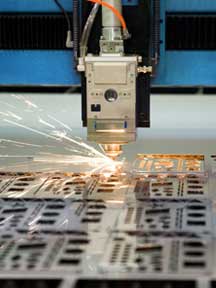Latest News
November 7, 2013
 |
Dear Desktop Engineering Reader:
Embedded Systems Outlook 2013 from National Instruments is a compendium of essays that offers a glimpse into the company s impressions of key technologies and methodologies that are and will be influencing the craft of designing embedded systems. The paper contains five chapters as well as an opening commentary from NI s president, CEO, and co-founder, James Truchard. Each offers a great deal of food for thought, but three in particular stood out for me. No matter your career relationship with embedded systems, I think you ll find that these articles resonate across all engineering disciplines.
The first is Truchard s brief It s Time for the Tools to Get Out of the Way commentary. Truchard s thesis is that the challenges of our times—energy, for example—are opportunities for embedded systems designers. But the engineering know-how to attack a challenge is separated from embedded design hardware and software technologies. Inherently, this means less experimentation and less innovation since, say, an energy specialist has to translate ideas to the embedded designer to get a prototype. The solution is to make embedded system hardware and software technologies more accessible to domain experts in more areas of engineering and science. The route to such a solution is adaptable hardware and integrated, easy-to-use software that gets out of the way to innovation.
This leads us to the first of the main commentaries in the paper, Reconfigurable Heterogeneous Architectures. In spite of its potentially scary multisyllabic title, this paper is really a plainly spoken argument for FPGA (field-programmable gate array) technology. The nub of it is two-fold. First, a system designed around a microprocessor typically has application-specific I/O, making it a fixed system. Specialization of such a system comes in the form of ASICs (application-specific integrated circuits), but ASIC creation is an expensive proposition that locks you into a design. FPGAs are reconfigurable. Placed between a general-purpose processor and I/O, an FPGA makes upgrades and product differentiation faster, easier, and less expensive.
The third essay that struck me, Democratization of Embedded System Design, picks up on and extends the first two themes. Here, the discussion focuses on an emerging trend in embedded design teams: smaller design teams focused on transferring expertise into more innovative products. Traditionally, embedded design teams are a three-headed hydra containing groups of experts: hardware, software, and mechanical engineering. The domain expert guides each of these disciplines. But nobody—not the hardware jock, the software wizard, the mechanical engineer, or the domain domo—can use the specialized tools employed by the other. Each is locked into a narrow sphere of expertise.
This means two things. First, the key to a given design s success is how well the domain expert could communicate the vision thing for the design, how well the specialized tool-wielders understood the expert, and how well they could communicate their hassles implementing the vision thing to the expert. Two, all this back-and-forth communication means slower development cycles, far fewer prototypes, and ultimately, less innovation.
Here we circle back to Truchard s piece and the first essay. By making the hardware and software components of embedded system design accessible to the domain expert, that expert can move from overhead to upfront in the process. Graphical programming that both hides the code complexity and simulates the hardware enables more and faster iterations, which is the key to innovation. Reconfigurable hardware enables faster deployment of fresh ideas. None of this eliminates specialized expertise in the other disciplines, but it means that leaner teams can focus on what they do best. It also compresses the design cycles, saves costs, and frees up team members for other projects.
The rest of this 16-page paper builds off these platforms and targets such matters as cost analysis and machine vision. They are well worth the read. In particular, the essay on how digital technologies are affecting how we use and move energy is highly recommended.
National Instruments always does a good job with papers such as Embedded Systems Outlook 2013. Hit today s Check it Out link and see for yourself.
Thanks, Pal. ” Lockwood
Anthony J. Lockwood
Editor at Large, Desktop Engineering
Subscribe to our FREE magazine, FREE email newsletters or both!
Latest News
About the Author
Anthony J. Lockwood is Digital Engineering’s founding editor. He is now retired. Contact him via [email protected].
Follow DE




